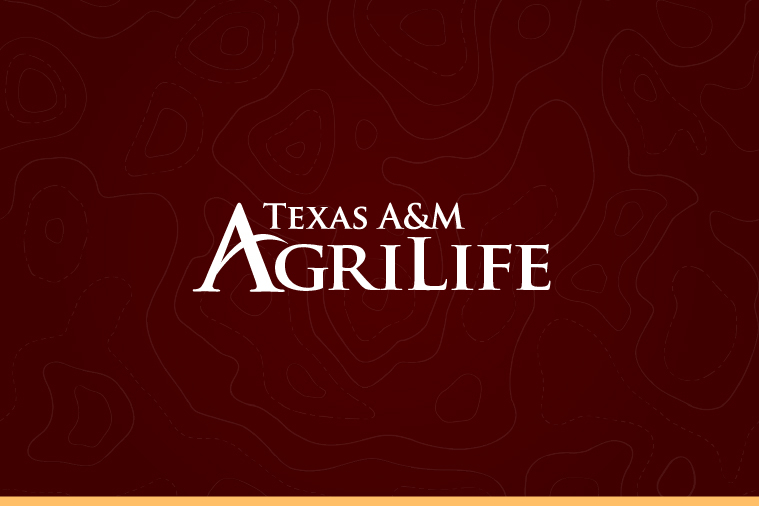Phenotyping wheat breeding lines takes on new look
AgriLife Research program designs time-saving machine
Writer: Kay Ledbetter, 806-677-5608, [email protected]
Contact: Dr. Jackie Rudd, 806-677-5600, [email protected]
Dr. Srirama Krishna Reddy, 806-677-5600, [email protected]
AMARILLO – Gathering millions of data points from thousands of wheat breeding lines across Texas is now as simple as riding a bike – or pushing one, in this case.
Dr. Jackie Rudd, Texas A&M AgriLife Research wheat breeder, and Dr. Srirama Krishna Reddy, assistant research scientist, both in Amarillo, said their new walk-behind phenotyper is still a work in progress with respect to data analysis and management, but strapping new technology with old technology is certainly making the process quicker and more reliable.
Traditional breeders depend on their eyes, Rudd said, but now they are using remote-sensing data to improve those “eyes-on” selections.

Texas A&M AgriLife has wheat plots in 30 locations, with about 30,000 plots total, Rudd said. These plots are divided into irrigated and dryland trials, as well as single row or small plots.
“Previously, someone had to walk through the plots and record their visual observations,” Rudd said. “We need that information in the breeding program to select the best material suitable to the region. And, each plot needs to be evaluated multiple times in a season.
“This new piece of equipment will allow breeders to make selections in a more reliable manner, instead of some things being subjective to human observations.”
The instrumentation strapped to a bicycle wheel and the software, Phenocorn, was prototyped last season by Jared Crain, Jesse Poland and other researchers at Kansas State University, Reddy said.

Working with Crain and using his design, Reddy has now gone through several iterations of the AgriLife Research wheat program machine, with the help of coworkers Jonny Simmons, Jack Bush and Kevin Heflin, who have worked on the design. It has been with grant funds from Texas A&M AgriLife Research Cropping Systems and Texas Wheat Producers Board.
Reddy said the frame is on a bicycle wheel with instrumentation attached on a cart designed to carry a computer.
The instrumentation includes a GPS system to track within 2-4 inches accuracy; a webcam, which can take three pictures per second; a temperature sensor to understand stress levels of the genotypes – the hotter the more stressed due to lack of water; and the GreenSeeker technology.
Normalized difference vegetation index, or NDVI as it is referred to by researchers, is an indicator used in remote sensing application to map the green vegetation. While scientists have found several applications for the technology, breeders find it useful in trait characterization, which helps in the accuracy of selecting germplasm that fits producers’ needs, Reddy said.
GreenSeeker, which measures NDVI, was developed initially to help determine variable-rate nitrogen application. But Reddy said they began using it in breeding applications to determine ground cover, forage estimates, biomass growth rates and nature of grain fill.

The webcam and GreenSeeker are a validation of each other, he said. For example, a lower NDVI could indicate disease, and the webcam images could be used to identify the particular disease, and eventually it could be used to count wheat heads. The temperature sensor also allows them to see signs of stress that GreenSeeker might not pick up as soon.
Reddy said they have been using GreenSeeker for the past two seasons in breeding populations for trait characterization and to correlate biomass to grain yields. The instrument has been extremely useful to understand the grain-filling dynamics and duration by detecting varieties that have rapid grain fill or longer green leaf area duration.
Encouraged by the results, he said, “we were interested in increasing the phenotyping capabilities by georeferencing the plots and adding multiple sensors. That is when collaboration with Jared and Jesse sprouted.”
GreenSeeker was also used in a study to estimate biomass accumulation and forage regrowth after grazing, he said. The sensor, along with the digital ground cover estimation method, was valuable in estimating forage growth rates and in predicting forage yield across seasons and species.

The GreenSeeker and the push cart equipment also provide methods to ground truth aerial imaging data that is already being gathered, Reddy said.
“With everything on one instrument, it takes about one-third of the time it did before,” Reddy said. “A person can walk the machine through the field at a regular pace and read 100 plots in about 20 minutes.”
“We want to keep improving it in terms of speed and perhaps add more sensors, especially for height,” he said. “It is more affordable at this time than other options, but technology such as UAVs may become more affordable and allowable. We envision using similar technology on unmanned aircraft or other transport devices to further increase our ability to rapidly and accurately collect data in our wheat breeding trials.”





